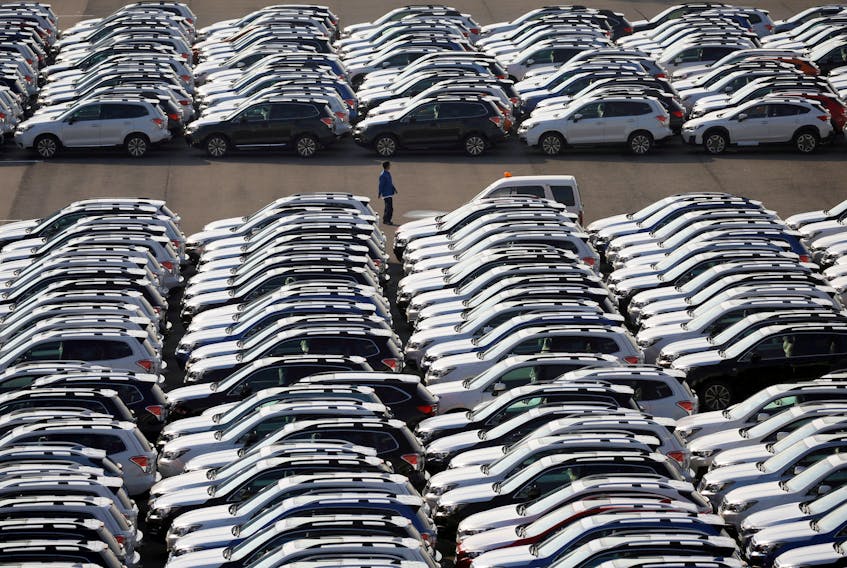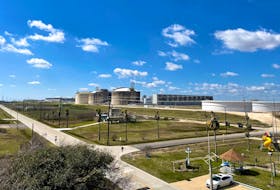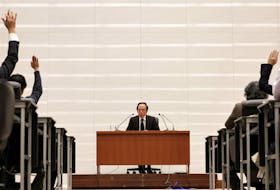By Linda Sieg and Kaori Kaneko
TOKYO (Reuters) - U.S. President Donald Trump has said Washington and Tokyo have reached an initial trade deal that he and Japanese Prime Minister Shinzo Abe are expected to sign in New York later this month.
Top Japanese officials, however, said a deal had yet to be clinched.
Full details of the agreement have not been disclosed. Below are some key elements that are known - and unknown - about the pending agreement.
U.S. TARIFFS ON CARS
Trump's announcement has left unanswered questions over whether the agreement would deliver Japan one of the main prizes of its negotiations: a U.S. pledge not to impose national security tariffs of up to 25% on Japanese vehicles and auto parts under Section 232 of U.S. trade law.
Japanese Foreign Minister Toshimitsu Motegi, who is in charge of talks with U.S. Trade Representative Robert Lighthizer, told a news conference he wanted to reconfirm at the final stage of talks that the tariffs would not be imposed.
Japanese officials from Abe on down have said that under a September 2018 agreement, the United States would not impose added auto tariffs while trade talks were under way.
Japanese auto exports account for about two-thirds of the U.S. trade deficit with Japan and the added tariffs would deal a blow to the country's trade-reliant economy.
A preliminary deal announced on Aug. 25 included reduced U.S. tariffs on unspecified industrial products but Lighthizer said these did not include autos. Tokyo has sought removal of a U.S. 2.5% tariff on autos and auto parts.
BEEF AND PORK
Japan is expected to agree to cut tariffs on imports of U.S. beef and pork to within levels granted to signatories of the multilateral Trans-Pacific Partnership (TPP) pact, officials have said.
That would allow Trump to please U.S. farmers ahead of next year's presidential election. The farmers had been disadvantaged in Japan's market after the United States withdrew from TPP after Trump took office in 2017. It would also let Abe keep a pledge to domestic producers.
Lighthizer said last month that wheat, dairy products, wine and ethanol would also benefit from the deal.
Washington, meanwhile, will make it easier for Japan to increase U.S.-bound beef exports by scrapping a 200-ton annual low-tariff quota, affording Japan the same beef trade status as Australia, New Zealand and Canada, Japanese media reported.
JAPAN-BOUND CORN PURCHASES
In announcing the initial agreement last month, Trump made reference to Japan's decision to front-load planned purchases of U.S. feed corn imports to cope with damage to its crop from an armyworm infestation.
However, Japanese officials said the country's total feed corn imports wouldn't increase under the deal, which simply front-loads three months' worth of roughly 2.75 million tons of imports. Private companies have the final say in how much feed corn they import.
WINE, RICE
Japan has agreed to phase out tariffs on U.S. wine imports over five to seven years, about the same as the eight-year TPP time-frame, media said, potentially cutting the cost of U.S. wine by about 13% for wine distributors.
However, the amount of U.S. rice that will be allowed to enter Japan tariff-free under the bilateral deal would be much less than the 70,000 metric tons accepted under the TPP, the Mainichi newspaper said.
CURRENCY DEVALUATION
Japanese Finance Minister Taro Aso said that a currency provision aimed at preventing competitive devaluation would not be included in the final deal.
That demand by U.S. lawmakers would tie Japan's ability to intervene in currency markets should the yen spike and threaten the country's export-reliant economy.
DIGITAL TRADE
U.S. technology industry officials say they expect a digital trade agreement with Japan to be closely aligned with provisions in the new U.S.-Mexico-Canada Agreement (USMCA), which follow the U.S. model for internet development.
Those provisions aim to ensure the free flow of data across borders without taxation, prohibit data server localization requirements and limit governments' ability to demand companies disclose their source code.
(Reporting by Linda Sieg, Kaori Kaneko, Tetsushi Kajimoto, Kiyoshi Takenaka and Daniel Leussink in Tokyo and David Lawder in Washington; Editing by Sam Holmes)









